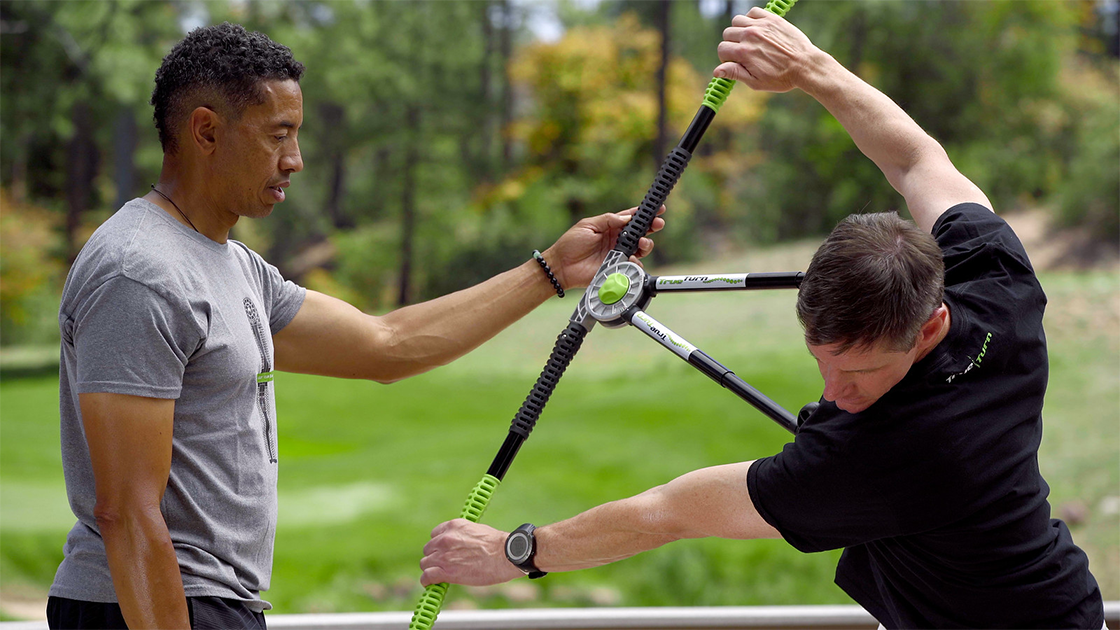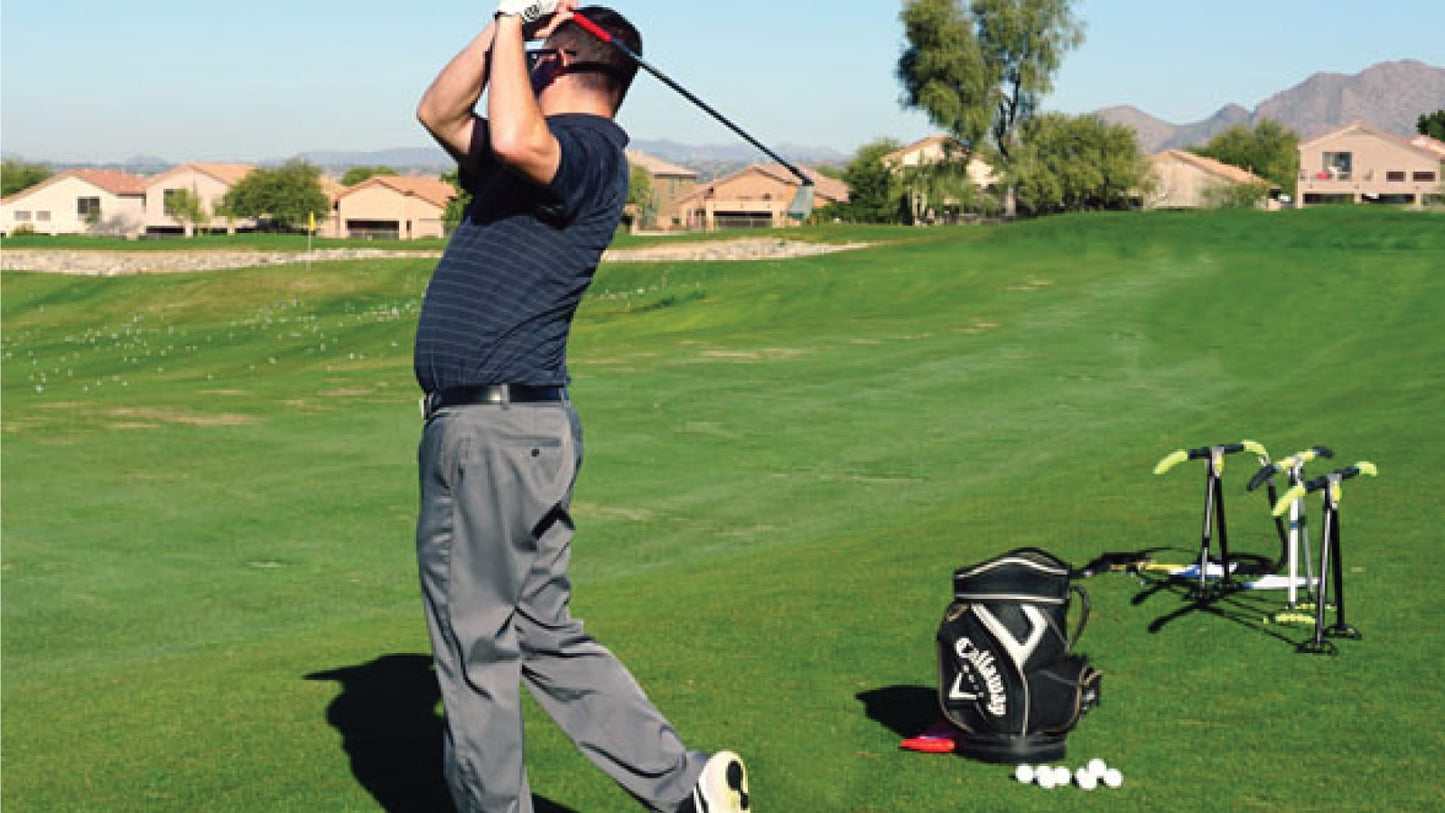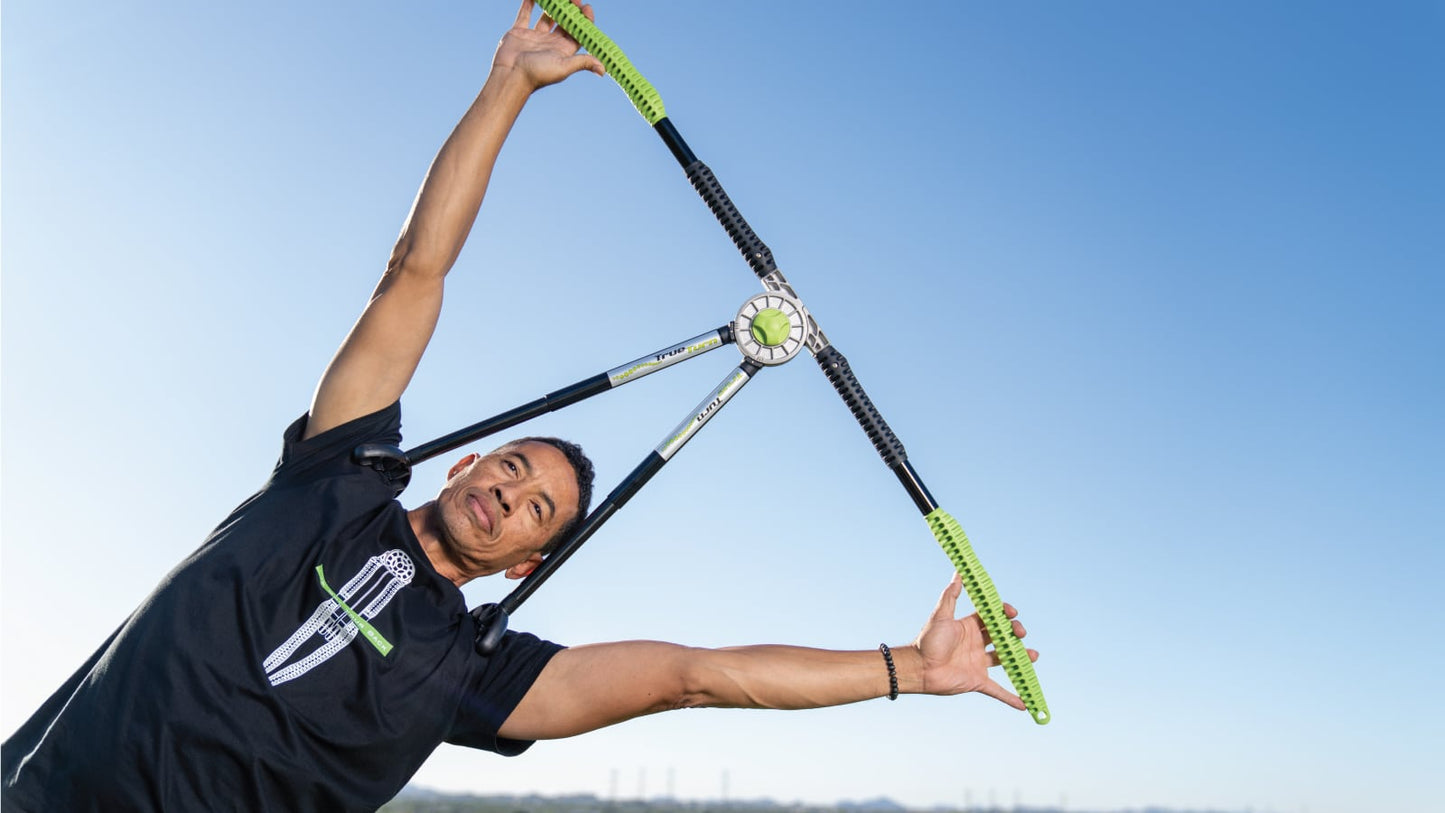1
/
of
7
Super E Caddy
T-spine Mobility for Golf
T-spine Mobility for Golf
Regular price
$269.00 USD
Regular price
Sale price
$269.00 USD
Unit price
/
per
Shipping calculated at checkout.
Couldn't load pickup availability
Not Your Average Broomstick
The TrueTurnPro is designed and engineered to enhance and protect the function of your back. Let’s gain a basic understanding of your spine and how each of the four unique sections work.

The first section of the spinal column is the cervical spine. The upper cervical spine is the most mobile section of the entire column. These vertebrae are made for a great amount of rotation, flexion and extension of the head.
The second section of the spinal column is the thoracic spine. The thoracic spine is the largest and most dynamic. This section contains the entire rib cage which is attached to the column, with the exception of the last 2 ribs. As well, the thoracic spine protects the internal organs. The vertebrae in the thoracic section are built strong and specifically designed for rotation, flexion and extension of the torso.
The third section of the spinal column is the lumbar spine. The lumbar spine is an immobile and strong segment, built to withstand and stabilize a great amount of pressure. However, this section of the column is made for flexion, extension and side to side motion. The lumbar spine is NOT built for rotation. Common factors contributing to low back pain are: poor posture, long periods of time sitting, lack of core strength, lack of flexibility, faulty movement patterns, and obesity.
The fourth and last section of the spinal column is the sacral spine. The sacral spine is the strong supportive base of the spinal column. The sacral joint joins with the iliac bone (Pelvis) and forms the SI joint (sacroiliac joint). The sacral spine also joins with L5 of the lumbar spine to create the lumbosacral spine. This general region of the body, including the hips is the foundation of all athletic movement. Although the low back and hip components are very strong, statistics show that 85% of all people will suffer from low back pain during some point in their life.
The Science of How and Why The TrueTurnPro Works
The proprietary configuration of the TrueTurnPro allows the user to multiply and leverage kinetic energy. Kinetic energy can be defined as the amount of muscle force you can produce to cause motion. Swinging a golf club to hit a ball requires kinetic energy, as does stretching and contracting muscles to move your joints. Therefore, the TrueTurnPro allows the user to leverage this kinetic energy to safely increase your active range of motion.
Leverage is commonly defined as the exertion of force by means of a lever. Levers are used to magnify force, which assist in causing movement. The TrueTurnPro is an innovative lever designed to assist the user in increasing flexibility, strength and stability around the spine.
The configuration of the TrueTurnPro produces a rotational stretch for the thoracic spine which can help to decompress the lumbar spine. Following a proper setup and fitting, the device anatomically connects the arms, shoulders and back into a corrected and fixed position. The anatomically correct position allows you to multiply and distribute kinetic energy in opposing directions causing rotation to occur around the axis point which is your spine.
The TrueTurnPro allows you to leverage and force your shoulders to move around the spine producing true thoracic rotation. The TrueTurnPro is a simple hand held device that does not require any power other than human kinetic energy.
Thoracic Immobility and Its Challenges
A lack of thoracic mobility (rotation) will most often produce the following physical challenges and conditions for golfers.
- Increased pressure, load, and compression of the lumbar spine often results in troublesome issues with the disc in the lower back.
- Reduced freedom of movement restricts the muscle function of the core and torso.
- Limited thoracic mobility will often emerge as a variety of faulty movement patterns imitating rotation.
To properly swing a golf club is difficult, the complete full swing requires a combination of hip mobility, hip stability and a strong and stable lower back. However, the most critical component is the stability and mobility of the thoracic spine. Below are some examples of common swing faults which are mainly a result of poor thoracic mobility:
- Reverse Pivot
- Loss of Posture
- Early Extension
- Hip sway or slide resulting in hip discomfort
- Produces the “over the top” swing fault
- Produces the “arm swing” swing fault
- Loss of Distance and club head speed
- Incorrect Kinematic Sequence
In the photos (Fig 1 and 2) below notice how the club in both examples are set at nearly the same position at the top of the swing. The photo with the red arrows display the common and faulty swing flaw known as the “Arm Swing”, in which the arms lift the club into the top position. The arm swing produces inconsistent ball striking with loss of power and accuracy. The photo with the green arrows is a properly placed club position produced by rotating the thoracic spine into a powerful hitting position.
Share












